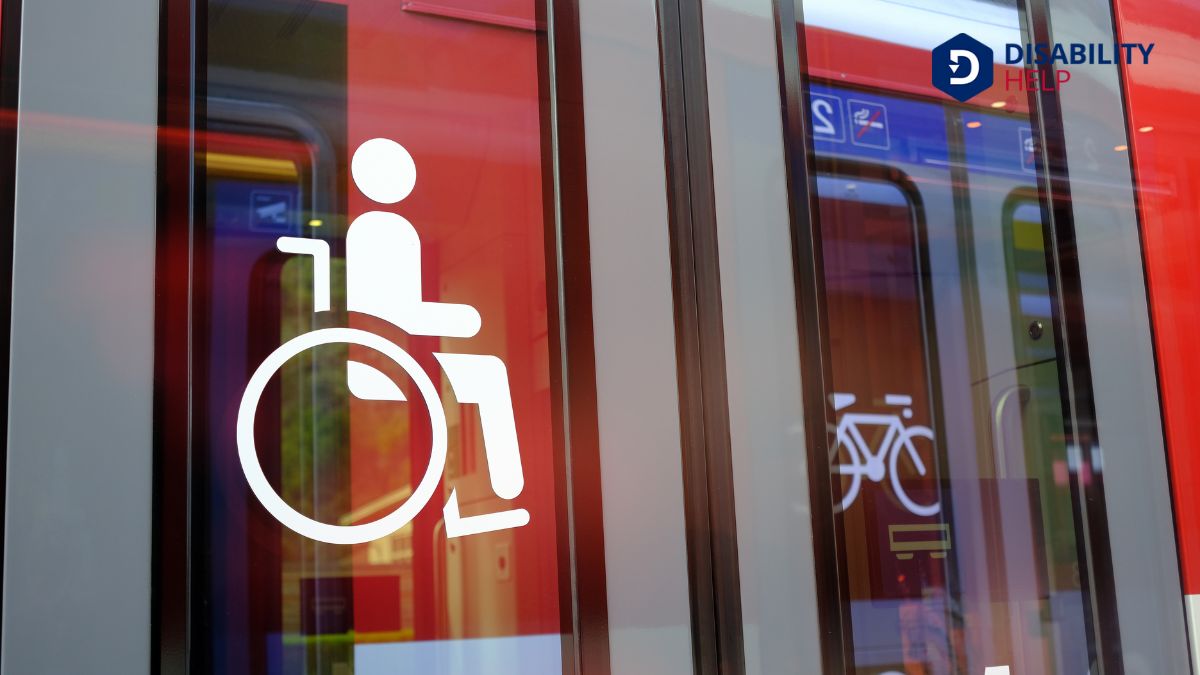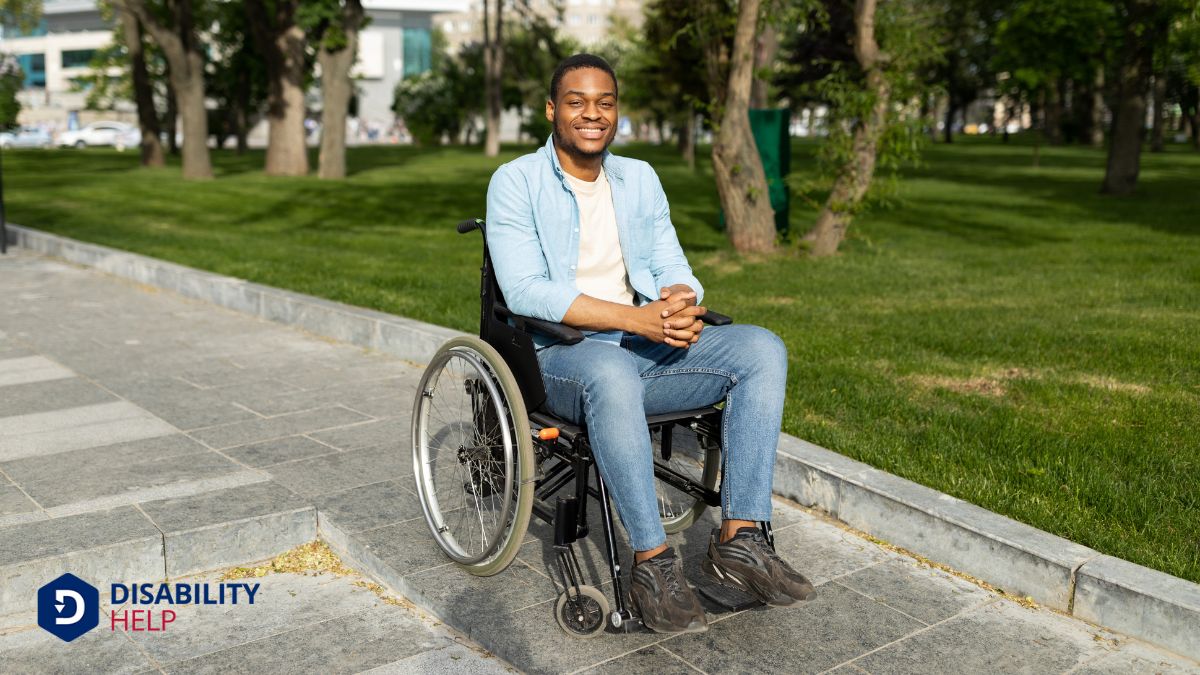To vastly improve life for those with disabilities, we should prioritize five key infrastructure upgrades. Accessible public transportation, like stations with elevators and audible crosswalk signals, guarantees mobility. Barrier-free building entrances with ramps and automatic doors offer easy access. Inclusive recreational facilities with accessible equipment help everyone participate. Enhanced sidewalks and crosswalks, including curb cutsRamps built into sidewalks or curbs to allow easier access for wheelchairs and those with mobility i... and audible signals, facilitate safer travel. Finally, integrating assistive technology—such as screen readers and voice recognition—makes everyday interactions seamless. By focusing on these areas, we can build a more inclusive community where everyone thrives if we delve deeper into the specifics.
Key Takeaways
- Retrofitting public transportation stations with elevators and ramps enhances accessibilityThe design of products, devices, services, or environments to be usable by people with disabilities.... for individuals with mobility impairments.
- Installing audible pedestrian signals at crosswalks aids visually impaired individuals in safely navigating streets.
- Implementing barrier-free building entrances with automatic doors and wide ramps ensures easy access for all users.
- Creating inclusive recreational facilities with adaptive sportsSports that are adapted to meet the needs of individuals with disabilities, allowing them to partici... equipment and accessible playgrounds promotes social inclusionThe practice of creating environments in which any individual or group can be and feel welcomed, res... and physical activity.
- Enhancing sidewalks with curb cuts and managing obstructions provides clear, accessible paths for people with disabilities.
Accessible Public Transportation

When we discuss accessible public transportation, we're addressing an essential need for 1 in 4 Americans living with disabilities. Public transit systems equipped with ramps and lifts are crucial for those with physical disabilities. For instance, SEPTA in Philadelphia is actively retrofitting stations with elevators, making it easier for everyone to access the subway system.
But accessibility isn't just about physical access. Visually impaired individuals benefit greatly from audible signals at crosswalks, which help them navigate public transportation safely. Dedicated bus lanes also play a pivotal role in improving accessibility for all transit users, including those with disabilities, by ensuring that buses run more reliably and efficiently.
Creating a complete accessibility infrastructure means considering the diverse abilities of all residents. It's not just about making a few changes here and there; it's about an integrated approach that enhances everyone's quality of life.
Public transportation must be a model of inclusivity, reflecting our commitment to equal opportunity. By focusing on accessible public transportation, we're not just improving mobility; we're fostering a more inclusive and equitable society for all.
Barrier-Free Building Entrances
Barrier-free building entrances are essential for creating inclusive environments where everyone can access facilities easily. These entrances, designed with features like ramps, automatic doors, and tactile paving, greatly enhance accessibility for individuals with disabilities, particularly those with mobility impairments. By adhering to ADA standards, these entrances guarantee clear paths, appropriate width, and minimal slopes, making them accessible to all.
Implementing barrier-free entrances not only benefits people with disabilities but also parents with strollers and elderly individuals. This approach fosters inclusivity and independence, allowing everyone to move freely and confidently. Additionally, properly designed entrances ensure adherence to accessibility regulations, ultimately improving the overall user experience.
Here are a few essential features of barrier-free building entrances:
- Ramps: Gradual slopes replace stairs, making it easier for wheelchairs, strollers, and those with mobility impairments to enter buildings.
- Automatic Doors: These doors provide hands-free access, which is beneficial for those who may have difficulty opening heavy doors.
- Tactile Paving: Textured ground surfaces guide visually impaired individuals safely into buildings.
- Wide Entrances: Sufficiently wide doors ensure that wheelchairs and other mobility aidsDevices designed to help individuals move around more easily, such as canes, walkers, or wheelchairs... can pass through without difficulty.
Inclusive Recreational Facilities
After guaranteeing barrier-free building entrances, we should also focus on creating inclusive recreational facilities. Inclusive recreational facilities are vital for promoting accessibility and fostering social interaction among people of all abilities. By integrating features like wheelchair ramps, tactile paving, and accessible playground equipment, we can create spaces where everyone feels welcome and engaged.
Adhering to ADA guidelines is essential to guarantee these facilities provide equal accessThe principle that all individuals, including those with disabilities, should have equal opportunity... and enjoyment for individuals with disabilities. Accessible picnic areas and adaptive sports equipment enhance the recreational experience, allowing people with disabilities to fully participate in various activities. Outdoor fitness stations and accessible trails or nature walks cater to diverse needs, making physical activity more inclusive.
When we design inclusive recreational facilities, we promote not just physical health but also social well-being. These spaces encourage social interaction, helping build a sense of community and belonging. By incorporating accessible playground equipment, we ensure that children of all abilities can play and learn together.
Adaptive sports equipment allows everyone to enjoy competitive and recreational sports.
Let's prioritize the development of inclusive recreational facilities to create a more accessible and enjoyable environment for all.
Enhanced Sidewalks and Crosswalks

Enhanced sidewalks and crosswalks play a vital role in guaranteeing safe and accessible urban environments for everyone, especially individuals with disabilities. When we invest in this kind of infrastructure, we promote an inclusive society that prioritizes disability inclusionThe practice of ensuring that individuals with disabilities have equal access to employment opportun....
Let's break it down into key improvements:
- Curb cuts and wide sidewalks: Adding curb cuts and maintaining wide, even sidewalks helps people with mobility aids and those with disabilities move freely. Proper sidewalk maintenance is essential to avoid hazards.
- Audible pedestrian signals: Installing audible signals at crosswalks supports visually impaired individuals by providing audio cues for safe navigation.
- Sidewalk obstructions management: Addressing and removing sidewalk obstructions ensures that paths remain clear and accessible for everyone, including wheelchair users and those with other disabilities.
- Accessible infrastructure for public transportation: Retrofitting public transportation systems with ramps, lifts, and elevators makes it easier for all users, particularly those with disabilities, to access these services.
Assistive Technology Integration
Integrating assistive technology into public infrastructure is pivotal for creating an inclusive environment that empowers individuals with disabilities. By incorporating tools like screen readers and voice recognition software, we can greatly enhance accessibility. These technology solutions cater to diverse needs, making interactions with both physical and digital infrastructure more seamless and intuitive.
When we conduct usability tests featuring participants with disabilities, we gain valuable insights that help us refine and improve our infrastructure. This approach ensures that our public spaces and digital interfaces aren't only accessible but also user-friendly.
Companies like Microsoft have shown a strong commitment to inclusivity, driving innovation in technology that benefits users with diverse needs.
Frequently Asked Questions
How Can We Improve Facilities for People With Disabilities?
We can enhance facilities for people with disabilities by installing ramps and elevators, implementing tactile paving and audible signals, creating accessible parking, ensuring wide sidewalks with curb cuts, and developing apps for real-time accessibility information.
What Are the New Innovations for Disabled People?
We're seeing amazing innovations for disabled people. Apps provide real-time accessibility info, smart traffic lights adjust for pedestrians, and contactless payment systems enhance ease. These advancements make daily life more manageable and inclusive for everyone.
What Technologies Do Disabled People Need?
We need technologies like screen readers, voice recognition software, and sensory aids to improve accessibility. Mobility aids, communication devices, and smart home systems tailored to individual needs are essential for enhancing independence and communication for disabled individuals.
How Can Our Society Better Include People With Disabilities?
We can better include people with disabilities by advocating for accessible infrastructure, promoting inclusive policies, and raising awareness. Let's work together to create spaces and opportunities where everyone feels welcome and valued, regardless of their abilities.
Conclusion
Incorporating these five public infrastructure improvements can make a world of difference for disabled people. By enhancing public transportation, ensuring barrier-free building entrances, creating inclusive recreational facilities, improving sidewalks and crosswalks, and integrating assistive technology, we can foster a more inclusive society. Let's work together to advocate for and implement these changes so everyone, regardless of ability, can navigate and enjoy our communities with ease and dignity. Together, we can make a significant impact.






